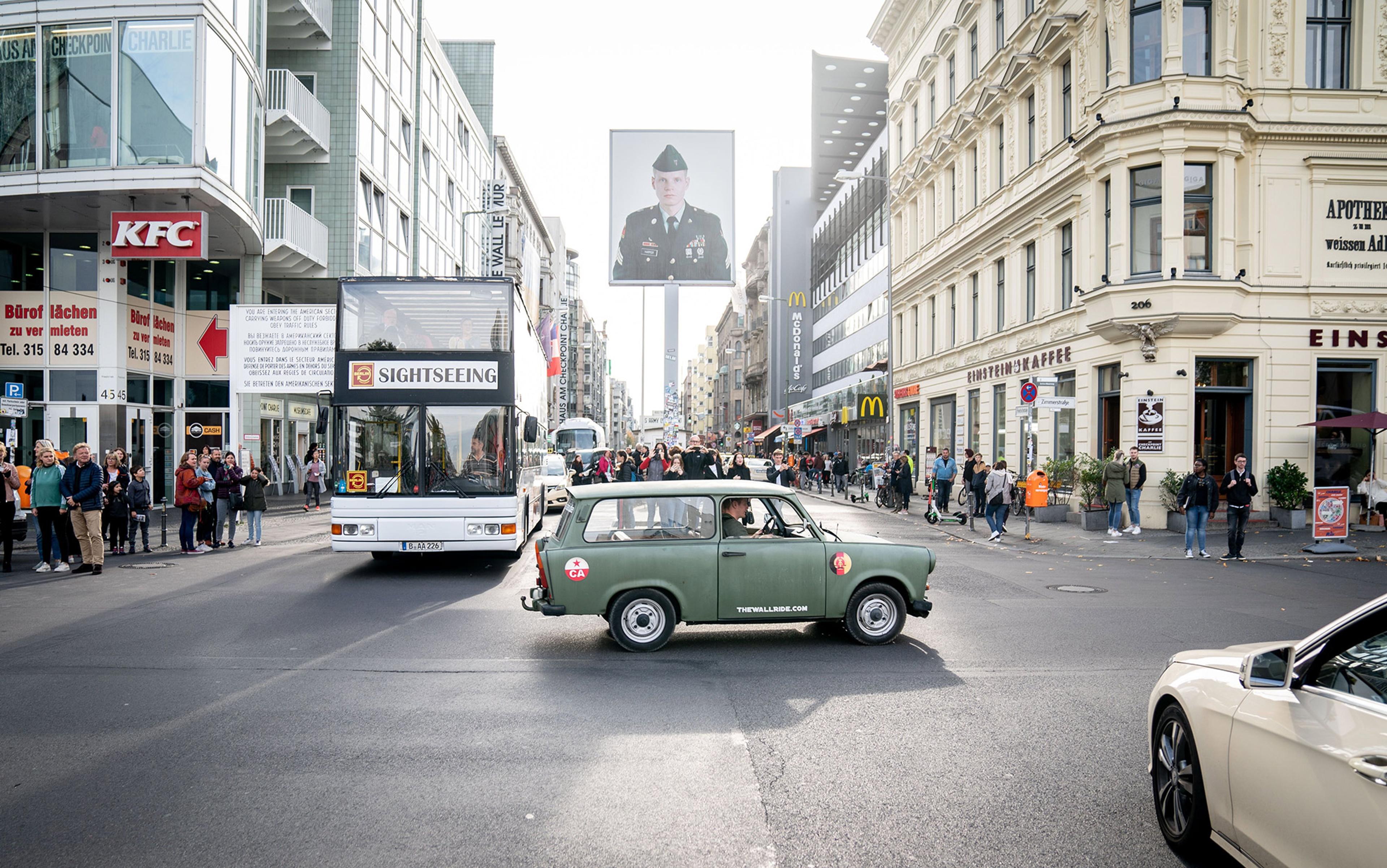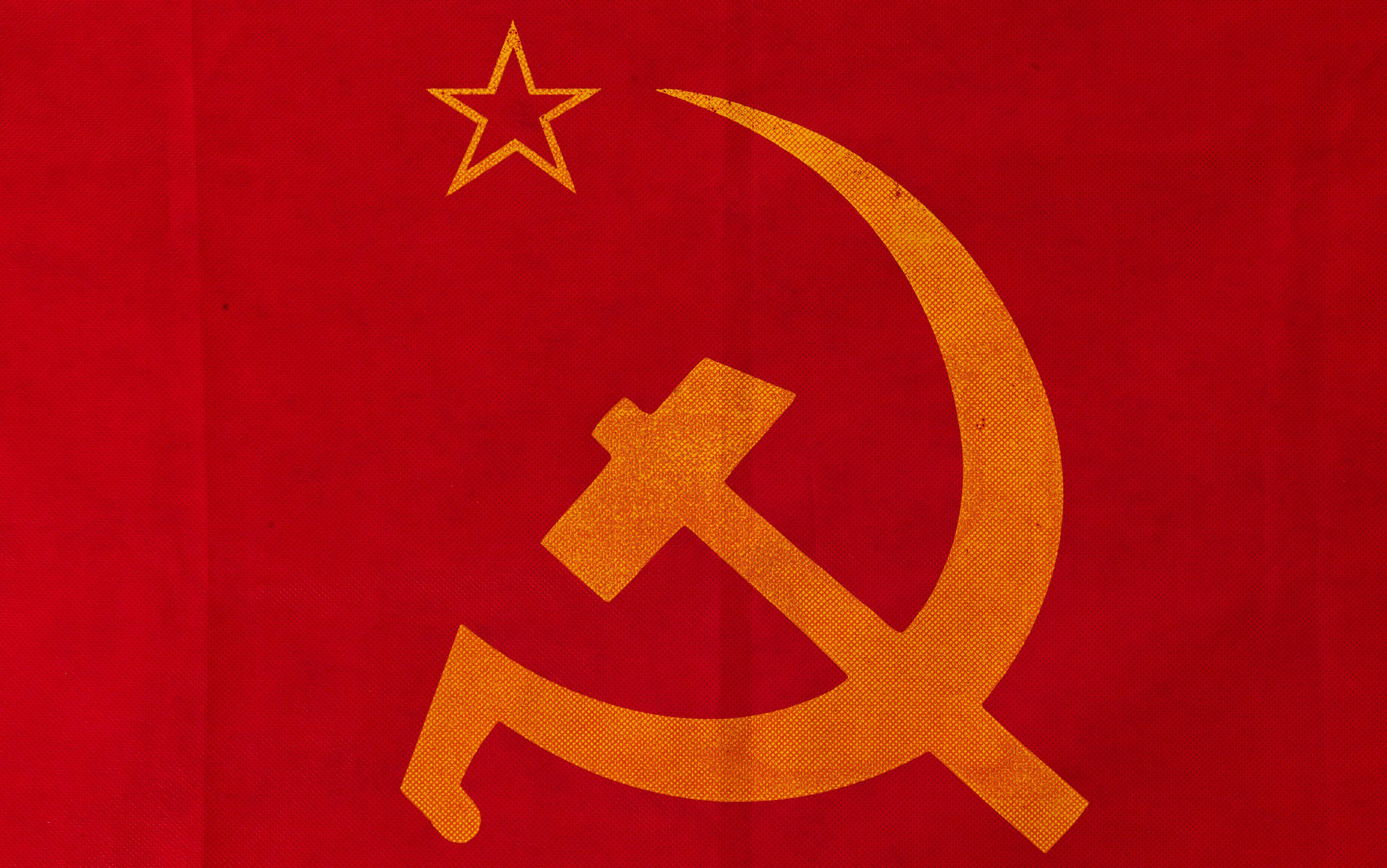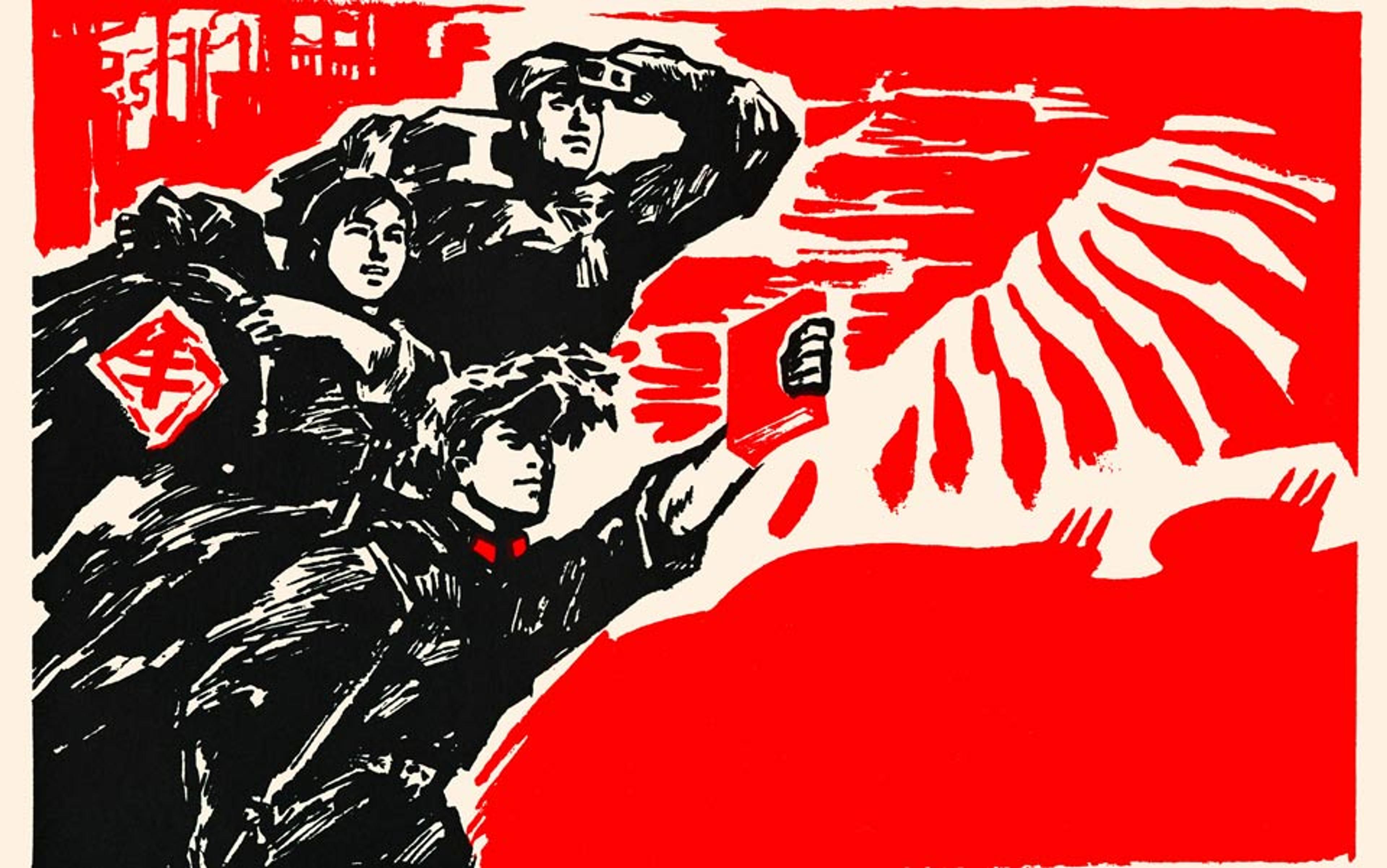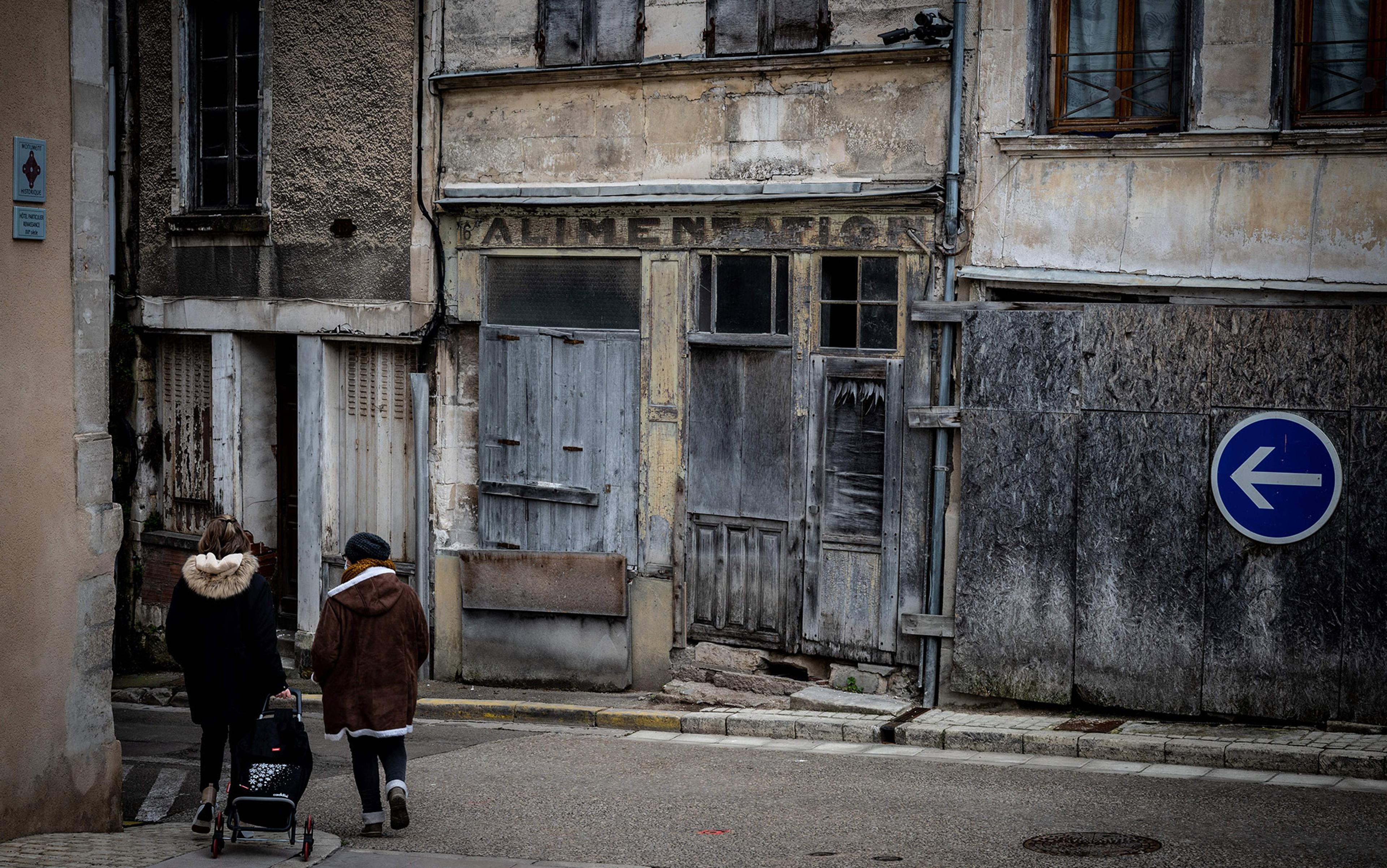In the run-up to Hungary’s parliamentary elections in 2018, one of the cabinet ministers of the country’s ‘illiberal’ prime minister Viktor Orbán travelled to Vienna in neighbouring Austria, where he filmed himself walking through a part of the city where a number of immigrants have settled. As pedestrians go about their business in the background, their movements overplayed by a mournful piano melody, János Lázár earnestly tells the camera that there are hardly any white, German-speaking residents left in this part of town. Lázár then warns Hungarians that the same fate could await Hungary if they failed to vote for Orbán’s Fidesz party in the upcoming parliamentary elections.
Lázár’s stunt was about raising the fear of difference, but it also played into an opposite, one might say complementary, fear – that Hungary could become just like everywhere else. This anxiety about homogenisation is not limited to Right-wing thought. It is traceable across the political spectrum, suggesting that what people most fear is not difference, but instead a world in which nothing and nowhere is truly unique, one in which everything and everyplace is the same.
In August 1989, just a few weeks before the Berlin Wall came down, the East German writer Christa Wolf offered her view on the possibility of German reunification. Wolf had remained a communist party member until June that year, and even thereafter she espoused her Leftist convictions to the shrinking number of people who openly shared them. She firmly stated her opposition to the merger of the two Germanys. ‘[R]eunification – as the annexation of the smaller, poorer part of Germany to the larger, wealthier one – would render the self-critical treatment of our past much more difficult,’ she argued. The people of the German Democratic Republic (GDR) should instead try on their own terms to realise the dream of a truly ‘democratic socialism’ in a state where ‘contradiction’ can be not only ‘tolerated’ but even ‘made productive’. If the GDR were to simply disappear, the necessary opposite – Germany’s own ‘double meaning’ (a recurring theme in her literary work) – would disappear along with it, to catastrophic effect. Collapsing the two Germanys into one, in other words, would destroy it.
Just as Wolf decried the merger of the two Germanys, several decades earlier Herbert Marcuse mourned the merger of two dimensions in his book One-Dimensional Man (1964). Marcuse, a German philosopher of the Frankfurt School whose members devised a form of Western Marxist philosophy known as critical theory, offered an analysis of the homogenising effects of consumerism. He noted that:
If the worker and his boss enjoy the same television programme and visit the same resort places, if the typist is as attractively made up as the daughter of her employer, if the Negro owns a Cadillac, if they all read the same newspaper, then this assimilation … serve[s] the preservation of the Establishment …
The ‘enchained possibilities of advanced industrial societies’, by which Marcuse meant both the capitalist industrialised West and the Soviet Union, were characterised by an assortment of all-encompassing ‘controls’ that had become impossible to evade. These controls had achieved ‘the flattening out of the antagonism between culture and social reality through the obliteration of the oppositional, alien, and transcendent’ and the ‘wholesale incorporation’ of cultural values into the established order ‘through their reproduction and display on a massive scale’. If culture could not maintain its position above consumerism, the resulting homogenisation would serve the interests of the richest and most powerful.
Nor was Marcuse’s view limited to armchair Leftists living in consumer comfort on the Western side of the Iron Curtain. It was shared by decidedly non-Leftist dissidents in the Soviet Bloc. In the 1950s and ’60s, East-Central Europeans were ‘bought’ in exchange for forgetting certain parts of the past. Hungary’s communist party secretary János Kádár gave his country ‘goulash communism’ in exchange for silence on the matter of the crushed 1956 ‘counterrevolution’. Other Eastern Bloc ‘people’s democracies’ meanwhile maintained power by providing consumer goods and offering market concessions, the ability to travel and buy a weekend house in the country or by the sea.
East-Central European intellectuals such as Czesław Miłosz and Václav Havel felt these developments brought East and West closer together into the modern malaise of consumerism and the lies it concealed. Miłosz wrote of the Party’s logic in his book The Captive Mind (1953), namely that if the state ‘will supply its citizens with refrigerators and automobiles, with white bread and a handsome ration of butter … [m]aybe then, at last, they will be satisfied’. While in the East this manipulation was more ‘brutal’, Havel concluded in 1978 (10 years after the Prague Spring was crushed by invading tanks): ‘It would appear that the traditional parliamentary democracies can offer no fundamental opposition to the automatism of technological civilisation and the industrial-consumer society, for they, too, are being dragged helplessly along by it.’ Decades before the collapse of state socialism, these thinkers feared that consumerism was levelling out the distinction between East and West such that the West could not offer a genuine alternative.
In Judeo-Christian eschatology, there are two versions of paradise. One comes from the prophet Isaiah:
In that day the wolf and the lamb will live together; the leopard will lie down with the baby goat. The calf and the yearling will be safe with the lion, and a little child will lead them all.
In short, all conflict, contradiction and inequality will disappear and there will be peace and harmony. The other version of paradise appears in the Jewish Talmud as well as in the Christian Gospel of Matthew. From the Talmud: ‘A contrary order of things I have seen in the world beyond: the high in station are low there, the lowly are placed on high.’ And from the Gospel of Matthew: ‘So the last will be first, and the first will be last.’ In both cases, it is not equality and harmony that are promised, but a reversal of the existing worldly order.
These two opposite versions of paradise continue to haunt our sense of the possible, desirable and horrible. One might even speculate that they inform the idea of the ‘dialectic’ as it emerged out of 18th-century thought: as a back-and-forth between opposing aims until the poles are transfigured by the conflict into a new whole, which in turn yields a new struggle of opposites necessitating another struggle ending in another transformation, and so on. Among its earliest and most famous champions, namely Georg Wilhelm Friedrich Hegel, Karl Marx and Friedrich Engels, the dialectic process was not considered to be interminable, but rather to have a necessary and desirable end. For Hegel, this end was the full realisation of human freedom. For Marx and Engels, the end was socialism, which would be achieved when the forces of capitalism had exhausted their potential by fusing the economic, cultural, political and social spheres. ‘The bourgeoisie,’ Marx and Engels wrote in The Communist Manifesto (1848), ‘creates a world after its own image.’ Following this massive feat of homogenisation, Marxist theory asserted, it would no longer be possible to compensate for capitalism’s internal contradictions by adjustments within the system, and these would therefore burst out into the open, an eventuality that would ultimately give rise to socialism.
Vladimir Lenin went on to theorise that the harbinger of necessary capitalist collapse was ‘Imperialism’, which he designated ‘The Highest Stage of Capitalism’ in 1917, during the Great War. Lenin viewed the war as an expression of precisely the exhaustion of homogenising potential that Marx and Engels had predicted. ‘[I]mperialism is monopoly capitalism,’ he wrote, and signals ‘the transition from the capitalist system to a higher social-economic order.’ Before yielding to the longed-for ‘higher social-economic order’, however, capitalism would fuse the fragmentary elements of economy and society by means of big enterprise, mass data and centralisation to such an extent that the ‘shell’ that had earlier contained private property relations ‘must inevitably decay’ or be removed by ‘artificial means’, ie, revolution. Following on the heels of this great capitalist homogenisation, then, would come the ‘dictatorship of the proletariat’, when the last would be first and the first would be last until there was no more ‘first’ and ‘last’, and true equality was achieved.
For both the Right and the Left, a scenario in which predator lies down next to prey is no paradise
Meanwhile, the Right was also formulating its own critique of homogenisation, where the instrument of homogenisation was not capitalism but the progressive drive for equality, which the Right viewed as counter to nature. ‘Inequality is a state towards which nature inclines in all spheres,’ wrote the British-born German ‘racialist’ philosopher Houston Stewart Chamberlain in The Foundations of the Nineteenth Century (1899). ‘Nothing extraordinary is produced without “specialisation”; in the case of men, as of animals, it is this specialisation that produces noble races.’ Fascism, Benito Mussolini insisted in 1932, ‘[a]sserts the irremediable and fertile and beneficent inequality of men’. More recently, in his book You Will Not Replace Us! (2018), the French white nationalist Renaud Camus wrote that ‘Equality … destroys everything it touches …’
Thus, for both the Right and the Left, a scenario in which predator lies down next to prey is no paradise but, at best, only a prelude to something better and, at worst, a kind of hell in itself. In his 1947 book Eclipse of Reason, Max Horkheimer traced what he viewed as the catastrophic fusion of fascist and utilitarian thinking that emerged in the postwar era. The postwar collapse of these former opposites into one was not the same as their reconciliation. ‘[W]e might describe fascism as a satanic synthesis of reason and nature,’ he wrote, ‘the very opposite of that reconciliation of the two poles that philosophy has always dreamed of.’ Does the periodic revulsion that the Right and Left share towards homogenisation mean that both are truly on to something, although they diagnose its causes differently? Or is the truly horrific outcome rather the homogenisation of Right and Left implied by this strange consensus?
As Horkheimer’s text suggests, the possibility of homogenisation has not always been categorically alarming to these thinkers. Indeed, the far Right has long been intent on homogenisation, resulting in the marginalisation, expropriation and even mass murder of groups and individuals who did not fit the mould. For Marx, Engels and Lenin, capitalist homogenisation was an undeniably ruthless process, but also necessary as a prerequisite to the socialist dream of achieving true equality, beyond class antagonism. Others of their time shared the notion that homogenisation was at least natural and necessary, if not necessarily good. The metaphor they often used was of liquid diffusion, like two bodies of water previously divided but now merged. In 1922, the British historian Arnold Toynbee wrote of the inevitable ‘levelling’ course he presumed to be underway: ‘For good or evil, the barriers between the West and the Near East are down, and the interchange of currents seems certain to go on increasing until the waters find a common level.’ This was not a positive development in Toynbee’s view, who described it as a form of contamination. ‘It now looks as if the Near East were infecting conflicts of nationality in Western Europe with the ferocity and fanaticism which it has imported into its own,’ he wrote.
Not unlike Lenin’s conclusion, diffusionist thinking was rooted in anxieties surrounding imperialism and colonialism and its long-term effects on imperial metropoles. ‘Modern science,’ wrote the French poet and essayist Paul Valéry in 1919, ‘became a means of power … The utility of knowledge made knowledge a commodity, no longer desired by a few distinguished amateurs but by Everybody.’ This knowledge then spread ‘in more and more manageable or consumable forms’, and became ‘an article, that can be imitated and produced almost anywhere’. The result, he concluded, was that ‘the inequality that once existed between the regions of the world … – an inequality on which Europe’s predominance was based – is tending gradually to disappear.’
The horror of commodification was thus not so much a fear that everything was becoming a commodity, but that everyone might have the potential to own it. In ‘Crisis of the Mind’ (1919), Valéry strained to imagine means to counter what he called ‘the physical fact of diffusion’:
A drop of wine falling into water barely colours it, and tends to disappear after showing as a pink cloud. That is the physical fact. But suppose now that some time after it has vanished, gone back to limpidity, we should see, here and there in our glass – which seemed once more to hold pure water – drops of wine forming, dark and pure – what a surprise!…
This counterintuitive prospect, Valéry concluded, is ‘not impossible in intellectual and social physics. We then speak of genius, and contrast it with diffusion.’ To maintain its place of predominance, then, the West would have to perform miracles. Valéry thought this eminently possible, and emphatically desirable.
The implicit message broadcast by the two sides of the Cold War was: ‘Why can’t you be more like us?’ But once one side had its wish, what does ‘us’ even mean? In You Will Not Replace Us!, the white nationalist Camus lamented that the world is in the ‘momentous process of changing into a universal suburb’. When ‘the differences between the living dissolve making them all the same’, he wrote, they are all ‘interchangeable, replaceable’. Camus cited the French philosopher Georges Gusdorf’s Myth and Metaphysics (1953):
Spatial structures tend to become more and more homogeneous, the differences between the sites is blurred by the growing monotony and uniformity of the ways of living. All cities tend to look alike, as all houses do, all flats, all lives as well as all the political regimes. Modern uprooting makes men interchangeable. For that matter the value of individuals seems to go down at the same time as that of places, and the modern man is wondering with anguish whether there will soon be nothing but people being displaced in a concentrationnary universe.
Gusdorf, who spent the Second World War in various prisoner-of-war camps for refusing to defend the collaborationist Vichy regime, was no white nationalist. Neither is Peter Lamborn Wilson, the American anarchist also known as Hakim Bey, who made a very similar claim from a very different political perspective. ‘[S]peed and “commodity Fetishism” have created a tyrannical false unity which tends to blur all cultural diversity and individuality, so that “one place is as good as another”,’ he wrote in 1985. In the novel The Underground Railroad (2016), the African-American writer Colson Whitehead imagines slavery as a nightmarish kind of ‘concentrationnary universe’: a literal underground that offers no real escape, and mainly takes passengers to where the situation is worse or just differently bad. A comparable premise drives the plot of the Pakistani-born author Mohsin Hamid’s novel Exit West (2017) about a refugee couple fleeing civil war, taking magic doors to different locations and new lives, but ultimately never escaping.
‘[W]e are inevitably reminded,’ wrote the British theorist Mark Fisher in Capitalist Realism: Is There No Alternative? (2009), ‘that it is easier to imagine the end of the world than it is to imagine the end of capitalism.’ Fisher defined ‘capitalist realism’ as ‘the widespread sense that not only is capitalism the only viable political and economic system, but also that it is now impossible even to imagine a coherent alternative to it.’ He concluded: ‘[I]t could well be the case … that the future harbours only reiteration and re-permutation.’ In other words, a kind of empty ritual.
Marx and Engels wrote in the Communist Manifesto that capitalism ‘has drowned the most heavenly ecstasies of religious fervour, of chivalrous enthusiasm, of philistine sentimentalism, in the icy water of egotistical calculation’. Though not attributing the phenomenon to capitalism, the French novelist Marcel Proust remarked on the hollowing out of meaning in his newspaper commentary ‘Death Comes to the Cathedrals’ (1904). Proust imagined a church painstakingly preserved by state funds, its rituals carefully relearned and reenacted for ‘car-loads of snobs’ who arrive once a year, to ‘sample a work of art within the frame that originally was made to contain it’. Envisioning this well-rehearsed rite he wondered:
What higher, truer note must all have struck when the assembled people made their response to the priest, and bowed when the bell sounded for the Elevation, not with the detachment of actors in a revival, but because they, too, like their priest, like the man who had carved the stone, had faith.
In 1947, the German philosopher Max Horkheimer mourned that:
The same voice that preaches about the higher things of life, such as art, friendship, or religion, exhorts the hearer to select a given brand of soap. Pamphlets on how to improve one’s speech, how to understand music, how to be saved, are written in the same style as those extolling the advantages of laxatives.
Even the anti-Cassandra of history’s end, Francis Fukuyama writing in 1989, believed that: ‘In the post-historical period there will be neither art nor philosophy, just the perpetual caretaking of the museum of human history.’
Lenin feared calls for ‘unity’ because it sidestepped the necessity for a revolutionary leadership (ie, himself)
When explaining the horror of homogenisation, Right and Left both see capitalism and liberalism – driven by invisible forces with insidious intent – in the causal brew. They nonetheless have different takes on what or who these forces are. For the Right, ‘international Jewry’ has been a favoured culprit, a stand-in for what they see as the materialism of both capitalism and communism. For the Left, the figure of the bourgeois capitalist loomed large historically, with the (neo)liberal as that figure’s latest incarnation, although it often seems that the Left has a more disembodied perspective on the insidiousness of ‘the system’. In the words of the late (East) German playwright and poet Heiner Müller, ‘When it comes to the emancipation of humanity, the enemy is the enemy of humanity, which is to say not a person.’
A more telling parallel between the two is the attitude or mood of their homogenisation anxiety; mournfulness paired with apprehension about loss of stature and preeminence. Arguably, Wolf was concerned about the merging of the two Germanys because her life and relevance were bound to their division, which she repeatedly thematised in her work and which enabled her international fame. Arguably, Horkheimer and Marcuse were concerned about one-dimensionality and the ‘eclipse of reason’ because they needed high culture in order that they as intellectuals could remain relevant. Arguably, Lenin feared calls for ‘unity’ because it served ‘wretched amateurs’, sidestepping the necessity for a revolutionary leadership (ie, himself). Arguably, Valéry feared diffusion and imagined Western ‘genius’ effecting its reversal because he needed to believe that – as the anticolonial poet and statesman from Martinique Aimé Césaire wrote in Discourse on Colonialism (1950) – ‘the West alone knows how to think’. And, arguably, Renaud Camus and János Lázár fear replacement because it calls into question their sense of themselves as racially and culturally superior. Homogenisation is a problem for these thinkers, so they make every effort to turn it into a problem for everyone. In this way, they seek to give their particular anxiety a universal character. In short, they seek to homogenise the world.
What might set the Right and the Left apart more than anything now is that many – though by no means all – on the Left seem to have reached the conclusion that there can be no escape from this dreaded homogenisation. Here is Marcuse in 1964: ‘Dialectical theory is not refuted, but it cannot offer the remedy.’ And the Italian communist Franco ‘Bifo’ Berardi in 2011: ‘[E]veryday life is ready to be subjected to the unlimited rule of the commodity. From this standpoint, there is no difference between fascism, communism and democracy …’ Consult Marx, Antonio Gramsci, Michel Foucault or Pierre-Félix Guattari, and you will learn much more about the power and cunning of the homogenising system to check you at every turn than about how to confront or escape it. The Italian historian Enzo Traverso calls this ‘Left-wing melancholia’.
Meanwhile, the Right is feeling a rush of victory. Fukuyama wrote in 1989: ‘Perhaps this very prospect of centuries of boredom at the end of history will serve to get history started once again.’ In fact, this is just what the new Right has recently trumpeted. In 2009, the Russian far-Right philosopher Alexander Dugin declared that, in the fight against liberalism, ‘the future is in our hands, and it is open rather than predetermined’. And in 2017, Orbán delivered a speech in which he declared that: ‘The year 2016 was not the slightest bit boring.’ Instead, the anticipated monotony had yielded to ‘excitement, surprise, head scratching, knitting of eyebrows and rubbing of eyes’.
If we assume that the dominant subtext of Leftist thought is correct, that there has not been and can be no escape from homogenising capitalism, indeed that it’s unthinkable, then the Left has limited itself to confirming the Right’s anxiety, offering only an alternative explanation for what – rather than who – is to blame. Yet when Left and Right collapse in this way, both emerge strangely victorious; the Left because it accurately predicted the course of events and seems to view being right as a kind of victory in itself, and the Right because it views a fatalistic Left that feels paralysed as a sign that it has won. So it’s all the same.






